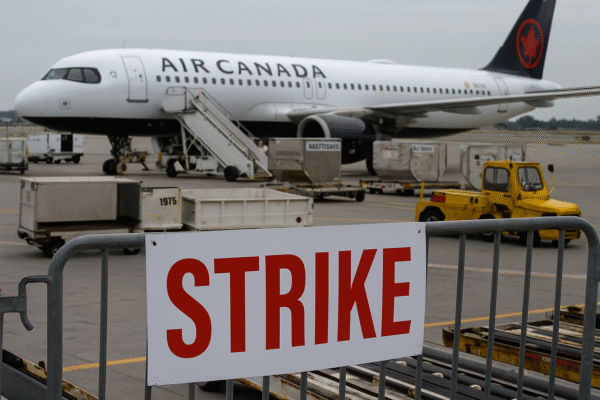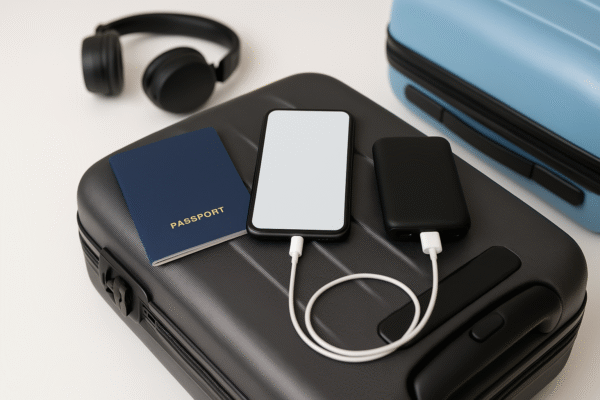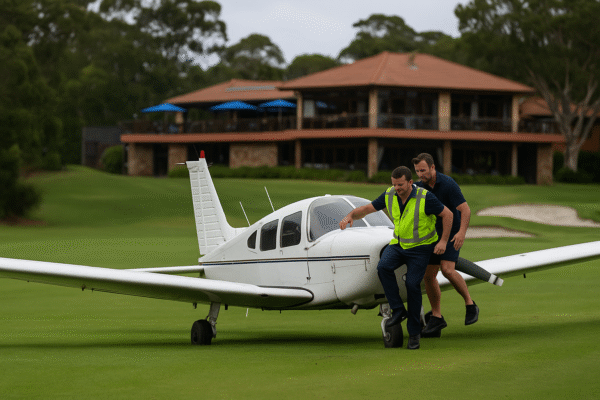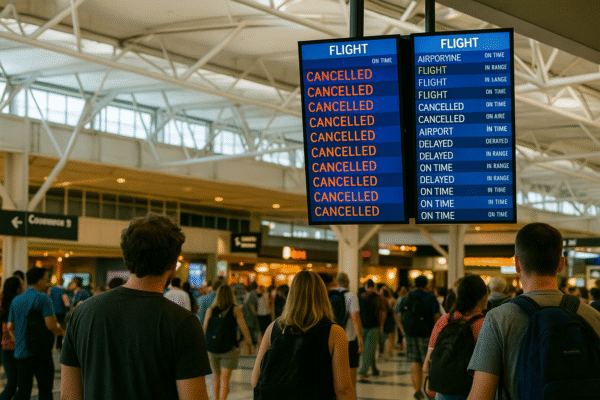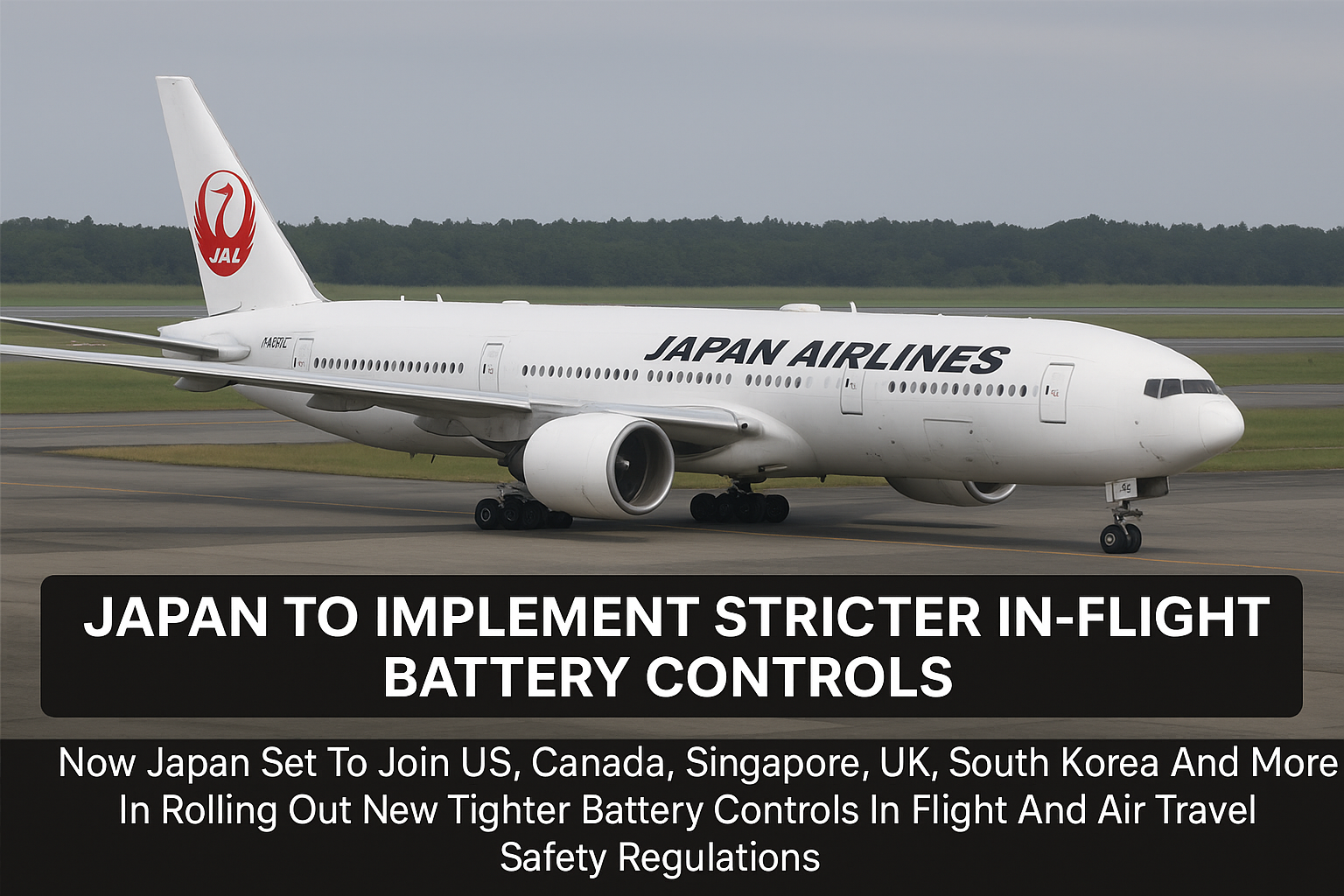Japan is taking a major step toward enhancing aviation safety by introducing stricter in-flight battery regulations, following a growing global trend. Beginning July 8, 2025, passengers flying on Japanese carriers such as All Nippon Airways (ANA), Japan Airlines (JAL), and 19 other members of the Scheduled Airlines Association of Japan (SAAJ) will be required to carry power banks on their person or in an accessible personal item — not in overhead compartments.
The Japan Civil Aviation Bureau (JCAB) has mandated this new measure to reduce the risk of in-flight fires caused by lithium-ion batteries, particularly those used in power banks. This regulation positions Japan alongside aviation safety leaders such as the United States, Canada, Singapore, the United Kingdom, South Korea, and others who have already implemented tighter battery-related air travel restrictions.
Why the New Rules Are Necessary
The move follows a series of alarming battery-related incidents both in Japan and abroad. Globally, faulty or overheated power banks have been linked to fires, mid-air smoke events, and emergency landings. A notable case occurred on a domestic flight to Osaka where a power bank caught fire mid-flight, prompting swift onboard response.
Thermal runaway, a dangerous condition in lithium-ion batteries that can cause smoke, flames, or even explosions, remains a key concern. Overhead compartments make it difficult to detect such incidents early, thereby delaying intervention and increasing the safety risk for all passengers. By requiring power banks to be kept within arm’s reach, Japan is enhancing passenger and crew response time.
Key Rules Effective July 8, 2025
Under JCAB’s new directive, the following restrictions apply on all domestic and international flights operated by Japanese carriers:
- Power banks must be on the passenger’s person or stored in an easily accessible personal item.
- Storing power banks in overhead bins is strictly prohibited.
- Power banks are not allowed in checked baggage under any condition.
- A maximum of two power banks per passenger is allowed, each ranging from 100Wh to 160Wh in capacity.
- Devices exceeding 160Wh are entirely banned from all flights.
- Charging is permitted in-flight, but devices must be monitored at all times.
- Uncertified or damaged batteries are not allowed onboard.
These rules will be enforced by airport security and airline staff, with updated digital check-in systems and airport signage assisting travelers in compliance.
Aligning with Global Standards
Japan’s regulation mirrors measures already in place in countries like the U.S., where the Federal Aviation Administration (FAA) restricts power banks to carry-on bags and sets watt-hour limits. Similarly, Canada’s Transport Canada, Singapore Airlines, Scoot, South Korea’s Ministry of Land, Infrastructure and Transport, and others have adopted similar restrictions following battery fires and safety scares.
Notably:
- Singapore Airlines banned both usage and charging of power banks from April 1, 2025.
- South Korea implemented a ban on overhead bin storage after a power bank incident on an Air Busan flight.
- Hong Kong now prohibits in-flight charging as of April 7, 2025.
- China’s Civil Aviation Administration will require government-certified markings on batteries, banning previously recalled models.
Other regional carriers, including Malaysia Airlines, AirAsia, Garuda Indonesia, and Batik Air, have also issued strict guidelines on power bank use and onboard supervision.
What Travelers Must Do Before Flying
Passengers flying with electronic devices must adhere to the following best practices:
- Check watt-hour ratings to ensure compliance with airline policy.
- Avoid recalled or uncertified power banks.
- Do not charge unattended devices mid-flight.
- Carry power banks in handbags or pockets, not cabin luggage stored overhead.
- Watch for overheating signs, especially during long-haul flights.
Violations may lead to confiscation, fines, or even denied boarding. In serious cases, flights may be delayed for cabin inspections, causing disruptions to all passengers.
Coordinated Enforcement and Passenger Education
Japan’s enforcement effort includes collaboration across agencies and airlines. Airport staff are being trained to identify prohibited batteries and educational signage is being installed at boarding gates and security counters.
Airlines will also update inflight safety videos, boarding announcements, and mobile apps to highlight the new rules. Campaigns using social media, travel advisories, and email notifications aim to inform flyers well in advance of their journeys.
The Scheduled Airlines Association of Japan has endorsed the move, stating it aligns with the ICAO’s aviation safety framework and will support Japan’s aviation reputation globally.
Looking Ahead: More Regulations on the Horizon
As personal tech devices continue to evolve, further regulations may be introduced. Innovations like solid-state batteries, thermal sensors, and QR code verification are being considered by regulators worldwide. Some airports, including in China and Indonesia, have begun testing battery scanners at security checkpoints to identify non-compliant devices.
Conclusion: Japan Puts Passenger Safety First
Japan’s proactive adoption of stricter in-flight battery regulations demonstrates its commitment to global aviation safety standards. By requiring passengers to carry and monitor power banks during flights, and banning storage in overhead compartments, Japan is minimizing onboard fire risks and setting a strong example for others to follow.
As global travel continues to surge, these measures reflect the reality that modern air safety depends not only on advanced aircraft, but also on responsible tech usage by passengers. With these updated rules, flying to and from Japan will be safer and smarter for everyone on board.
For more travel news like this, keep reading Global Travel Wire




